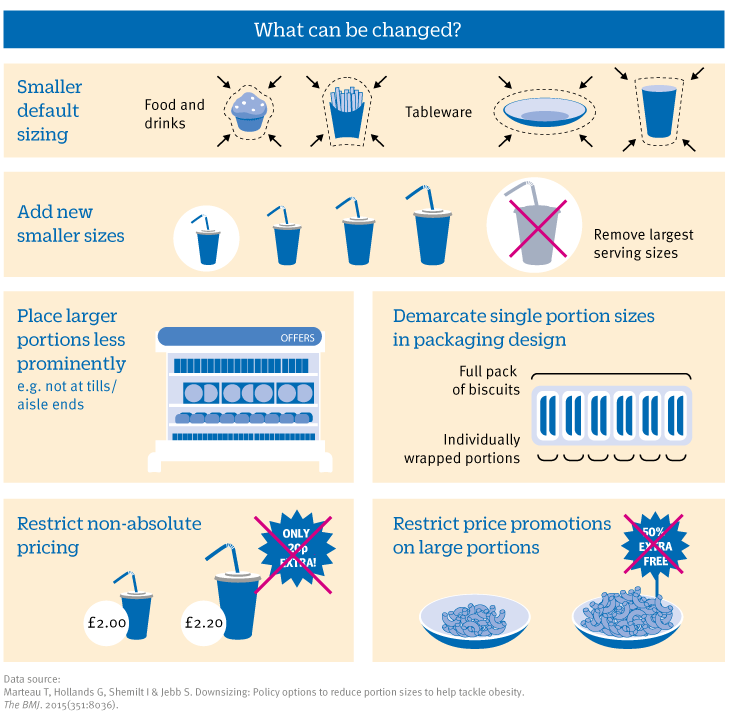Portion Size Policies Show Promise In Fighting Obesity, May Help Americans Cut Up To 29% Of Calorie Intake

Dieters have likely heard of the benefits of portion control, but according to a new study published in the British Medical Journal, implementing policies to ensure the public follows the recommended portion control standards may be powerful enough to fight the obesity epidemic. Researchers from the University of Cambridge have zeroed in on portion sizes from the food on your plate to the plate size itself.
After studying how people consume food and the psychology behind why one person tends to eat more than the other, the research team realized by simply cutting out large portion sizes, packages, or tableware, Americans could cut their daily calories anywhere between 22 to 29 percent. Another reason researchers believe turning to quantity instead of quality is because size interventions are easier to adopt for public organizations like schools, hospitals, military bases, and prisons.
In addition to putting policies into play, reinforcing and protecting policies may ensure they last long enough to make a difference in the public. The study’s authors wrote: "Disincentives or sanctions for non-participation in voluntary agreements may also help. Although policy makers and the food industry have primary responsibility for action, public acceptability is likely to be an important facilitator."
Over the last 50 years, plates, Tupperware, chip bags, and anything that is designed to contain food has grown in size, fitting in more food and, in turn, cueing people to eat more calories. It has led to today’s current “portion distortions.” According to Brian Wansink, the director of Cornell University’s Food and Brand Lab and author of Slim By Design: Mindless Eating Solutions for Everyday Life, the amount of larger sizes in the supermarket alone has increased 10-fold between the years 1970 and 2000. Even in people’s homes, the surface area of the average dinner plate has increased 36 percent since 1960.
Portion size, Wansink argues, is key because large packages in grocery stores, serving sizes in restaurants, and dishware in homes leads to an increase in what a person perceives as an appropriate portion, which ultimately ends up increasing the amount of food eaten in one sitting. The Cambridge research team follows the same theoretical train of thought, which is why they think their proposed policies may even be able to reduce over 50 percent of portions back to what they were in the 1950s when the obesity epidemic was exponentially smaller.

9 Portion-Controlling Policies:
- Reduce high calorie-foods and drinks, like single servings of confectionery, chips, and cakes.
- Reduce availability of larger portion and package sizes (ex., Stop producing large sodas).
- Place larger portion sizes in stores and cafes less accessibly, for example, by limiting portion size at checkouts, aisle ends, and special displays
- Restrict food and drink manufacturers and restaurants from charging larger portion products at lower prices. Also, restrict promoting prices on larger portion and package sizes.
- Highlight single portion sizes in packaging.
- Restrict portion and package sizes in advertisements.
- Make smaller plates, cups, glasses, and cutlery the normally used tableware.
- Design tableware to encourage smaller mouthfuls like shallow plates and straight-sided glasses.
- Price tableware in relation to size, making bigger plates cost more than smaller plates.
Source: Marteau TM, Schemilt I, Jebb SA, and Hollands GJ. Downsizing: policy options to reduce portion sizes to help tackle obesity. BMJ. 2015.



























